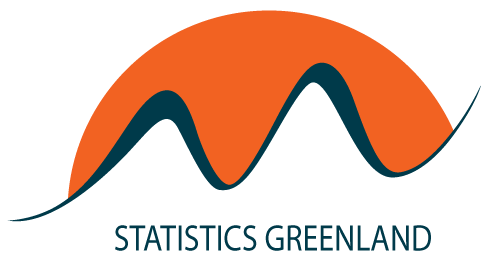Find figures in Statbank Greenland:
Pick data series:




Greenland´s population lives in towns and settlements on the coast. Over 60 per cent live in the five largest towns - Nuuk, Sisimiut, Ilulissat, Aasiaat and Qaqortoq.
Greenland has a total populace overweight of men, as the workforce born outside of Greenland consists of 2/3 men and 1/3 women.
Compared to the population size in Greenland, the internal migrations are significant, and have a big impact on the populace composition. An internal migration from outer districts to towns, primarily to Nuuk, has been going on for the last 50 years.
The majority of migrants are citizens of the Danish Kingdom, who move from Denmark to Greenland or vice versa. Greenland´s constant need for summoned workforce requires the net emigration of foreign nationals to be continuously countered by immigration. Over time, the foreign net immigration is at a balance.
Around 800 persons are born every year, and 500 die. Men and women born in Greenland have a shorter life expectancy than the average of the western world. This is primarily due to a high mortality rate caused by accidents and suicide. In Greenland, men live to the age of 69.6 years on average, while women live to the age of 73.5 years.
The general birth pattern has remained stable during the last ten years. Towns differ from settlements in fertility rate. Women in settlements give birth to more children than those in towns. However, since the start 1970´s, the fertility total has been constant, at around 2 births per woman.
 | 9. februar 2024 The population is increasing, but 290 fewer Danish citizens On January 1st, 2024, there were 56,669 people living in Greenland. The population has thus increased by 90 people during the last year, while the number of Danish citizens has fallen by 290 Læs artikel: her |
 | 18. december 2023 Births, Deaths and Migrations 2022 The Population Account describes how the population increased by 47 people from 56,562 to 56,609 in 2022 Læs artikel: her |
 | 6. november 2023 Population 169 down in 3rd quarter On October 1st, 56,696 persons lived in the country. That is 169 down compared to July 1st, and 77 more than a year ago Læs artikel: her |
Migrations (municipalities) 1993-2023 (BEEBAF2)
Internal migrations to and from municipalities 1993-2023 (BEEBAF2B)
Internal monthly migrations to and from municipalities 1993-2023 (BEEBAF2M)
Netmigrations by districts 1993-2023 (BEEBAF3)
Internal migrations to and from districts 1993-2023 (BEEBAF3B)
Internal migrations to and from localities 1993-2023 (BEEBAF4B)
Migrations by municipality and age 1993-2023 (BEEBBIU2)
Monthly migrations to and from Greenland by municipality 1993-2023 (BEEBBIU2A)
Migrations to and from Greenland by districts 1993-2023 (BEEBBIU3)
Migrations by locality 1993-2023 (BEEBBIU4)
Migrations by country and citizenship 1993-2023 (BEEBBIU6)
Return migrations (BEEREVAND)
2024 Population
2023 Quarterly Population, October
2023 Midyear Population
2023 Quarterly Population
2023 Population
Vital Statistics 2022
Vital Statistics 2021
Vital Statistics 2020
2016 Vital Statistics
2015 Vital Statistics
2017-2040 Population
2016-2040 Population
2015-2040 Population
2014-2040 Population
2013-2040 Population